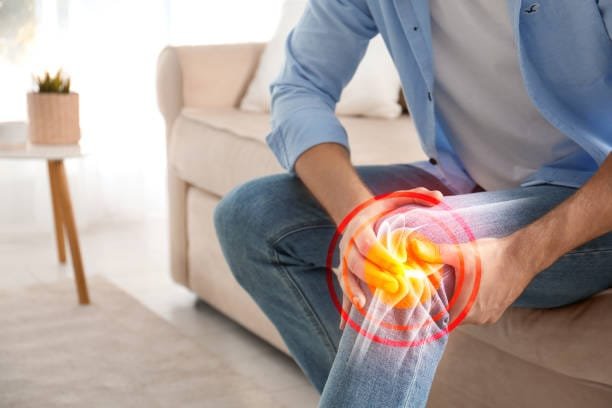
What is the Best Treatment for Chronic Joint Pain?

- Blog
- By Eddie Richmond
Chronic joint pain is a debilitating condition that affects millions of individuals worldwide, limiting mobility, decreasing quality of life, and increasing discomfort in daily activities. This article delves into the best treatments available to manage chronic joint pain effectively, with detailed options to provide relief and improve overall joint health.
Understanding Chronic Joint Pain
Chronic joint pain is a persistent condition that can last for months or even years. It is commonly caused by conditions such as osteoarthritis, rheumatoid arthritis, gout, lupus, bursitis, tendinitis, and other degenerative diseases. The pain stems from inflammation, damage to cartilage, or structural damage in the joints, often exacerbated by aging, injury, or lifestyle factors.
The goal of treatment for chronic joint pain is to reduce discomfort, improve joint function, and enhance overall quality of life. Given the complex nature of joint pain, a multi-faceted approach is often recommended, combining medication, lifestyle adjustments, physical therapies, and sometimes surgical interventions.
Top Medical Treatments for Chronic Joint Pain
1. Non-Steroidal Anti-Inflammatory Drugs (NSAIDs)
NSAIDs are often the first line of defense for treating chronic joint pain, particularly for conditions like osteoarthritis and rheumatoid arthritis. These medications, including ibuprofen, naproxen, and aspirin, work by reducing inflammation and providing pain relief.
- Advantages: Fast-acting and widely available without a prescription. They target inflammation, which is often the primary cause of pain in joint conditions.
- Disadvantages: Prolonged use can lead to gastrointestinal issues, kidney damage, and increased cardiovascular risk. Hence, long-term use should be carefully monitored by a healthcare provider.
2. Corticosteroid Injections
When inflammation is severe, corticosteroid injections directly into the joint may offer significant pain relief. These injections deliver strong anti-inflammatory medications, such as cortisone, which reduce swelling and discomfort.
- Advantages: Effective for targeted relief, especially for large joints like the knees, hips, and shoulders.
- Disadvantages: Corticosteroid injections should not be overused, as repeated use can lead to joint damage, weakening of tendons, and other side effects.
3. Disease-Modifying Anti-Rheumatic Drugs (DMARDs)
For conditions such as rheumatoid arthritis, DMARDs like methotrexate or sulfasalazine are often prescribed. These drugs help to slow the progression of the disease by altering the immune system’s response to inflammation.
- Advantages: DMARDs are highly effective in reducing joint destruction and slowing disease progression.
- Disadvantages: They can take weeks to months to work and may require regular monitoring for potential side effects, including liver and lung complications.
4. Biologic Response Modifiers
Biologics are advanced medications used to treat autoimmune forms of arthritis by targeting specific parts of the immune system that cause inflammation. Common biologics include adalimumab, etanercept, and infliximab.
- Advantages: Highly effective in reducing inflammation and slowing disease progression.
- Disadvantages: These drugs are usually more expensive and may increase the risk of infections due to immune suppression.
Non-Pharmacological Treatments for Chronic Joint Pain
5. Physical Therapy and Exercise
Physical therapy plays a critical role in managing chronic joint pain. Regular, low-impact exercises such as swimming, cycling, and yoga can help strengthen the muscles around the joints, improve flexibility, and reduce stiffness.
- Advantages: Strengthens joint-supporting muscles, improves range of motion, and reduces the burden on the joints.
- Disadvantages: For some individuals, pain may initially increase with exercise. Professional guidance is important to avoid further joint damage.
6. Weight Management
Excess weight puts additional stress on weight-bearing joints, particularly the knees, hips, and spine. Reducing body weight can significantly decrease joint pain, especially for those with osteoarthritis.
- Advantages: Helps reduce pain and slow the progression of arthritis by decreasing the load on the joints.
- Disadvantages: Weight loss can be difficult for some individuals, particularly when joint pain limits mobility. A balanced diet and low-impact exercise are key.
7. Heat and Cold Therapy
Heat therapy relaxes muscles and stimulates blood flow, while cold therapy reduces swelling and numbs sharp pain. Alternating between these therapies can be particularly effective for joint pain management.
- Advantages: Immediate, non-invasive relief for joint discomfort.
- Disadvantages: Temporary relief only. These therapies need to be used consistently for continued benefits.
8.Acupuncture
Acupuncture has been shown to help reduce chronic joint pain by stimulating the body’s natural pain-relieving mechanisms. By targeting specific points in the body, acupuncture may help alleviate pain and improve joint function.
- Advantages: Non-invasive and can complement other treatments.
- Disadvantages: The results vary from person to person, and multiple sessions may be required to achieve optimal results.
Alternative and Natural Remedies for Chronic Joint Pain
9. Herbal Supplements
Herbal remedies, including turmeric, boswellia, and ginger, are commonly used for their anti-inflammatory properties. These supplements may help alleviate joint pain by reducing inflammation and promoting healing.
- Advantages: Natural and typically have fewer side effects compared to pharmaceutical options.
- Disadvantages: The efficacy of herbal supplements can vary, and it’s essential to consult with a healthcare provider to avoid any interactions with other medications.
10. Glucosamine and Chondroitin
These supplements are often taken to maintain cartilage health and are especially popular among people with osteoarthritis. Glucosamine and chondroitin help build and maintain joint cartilage, potentially slowing the deterioration of joints.
- Advantages: Easy to find and relatively safe to use.
- Disadvantages: Clinical studies show mixed results. Some people experience great relief, while others notice little to no improvement.
11. HERBALEASE
HERBALEASE is a proprietary, all-natural joint pain relief formula made from pure herbs. Its blend of plant-based ingredients provides a safe alternative to conventional pain medications, offering relief from joint pain without side effects.
- Advantages: Reduces inflammation and promotes healing, suitable for long-term use without risk of dependence.
- Disadvantages: Natural products like HERBALEASE may take time to show results and may need to be combined with other treatment strategies for optimal effectiveness.
Surgical Interventions for Chronic Joint Pain
12. Joint Replacement Surgery
In severe cases where other treatments fail to provide relief, joint replacement surgery may be recommended. Hip and knee replacements are the most common types, where the damaged joint is replaced with a prosthetic.
- Advantages: Significant reduction in pain and improvement in joint function.
- Disadvantages: Recovery time can be lengthy, and surgery carries risks such as infection, blood clots, and prosthetic failure over time.
13. Arthroscopy
Arthroscopy is a minimally invasive surgical procedure used to diagnose and treat joint problems. Surgeons use a camera and small instruments to remove or repair damaged tissue inside the joint.
- Advantages: Minimally invasive with faster recovery than traditional surgery.
- Disadvantages: Not always effective for advanced joint conditions.
Conclusion
Chronic joint pain can be managed effectively through a combination of medical, non-pharmacological, and alternative treatments. The best treatment plan should be tailored to the individual’s specific condition, with regular consultations with a healthcare provider. By integrating a variety of approaches, from medications and supplements to exercise and lifestyle changes, individuals can find relief and improve their quality of life.
Related Posts



